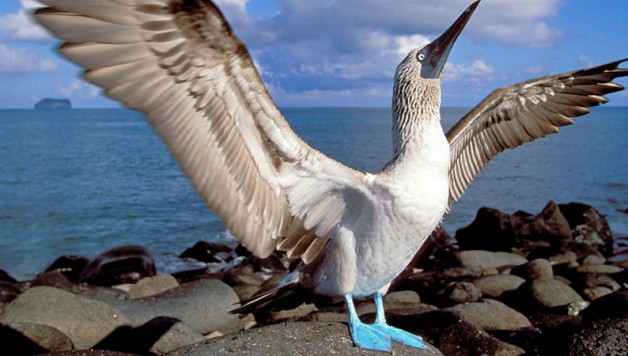Explore the Galapagos Islands After Completing the Inca Trail
If you’re jetting off to Peru with the intention of following the Inca Trail to Machu Picchu, make the most of your trip to South America by adding a tour of the Galapagos Islands to your itinerary once you finish your hike.
This amazing archipelago, located in the Pacific Ocean approximately 1,000 km off the mainland (and actually part of Ecuador), is home to some incredible wildlife and stunning landscapes. There are creatures here that are found nowhere else on the planet, making it a real must-visit destination for nature lovers.
Wildlife watching in the Galapagos Islands
This group of isles is probably most famous for being the place that provided Charles Darwin with the inspiration for his theory of evolution and it is home to a host of fascinating animals that are well worth seeking out on a trip here.
Due to their remote location, there are few native mammals on the islands – the Galapagos fur seal and Galapagos sea lion are the largest and easiest to spot – with reptiles and birds the most prolific animals. The marine iguanas, which feed off seaweed on the rocks just below the waterline are just one example of a species that has perfectly adapted to life on the barren landscape of the isles.
Other reptiles to keep an eye open for here include the numerous species of Galapagos tortoises (including the giant tortoise), Galapagos land iguanas and various kinds of gecko. There are dozens of bird species that inhabit the islands, either permanently or as part of a migratory pattern. Some of the most distinctive include the blue-footed booby and the magnificent frigate bird, although there are lots of finches (like the Floreana tree finch and mangrove finch) inland, as well as the likes of albatrosses, kittiwakes, petrels and Galapagos penguins in coastal areas.
Spectacular volcanic scenery
In geological terms, the Galapagos Islands are considered to be very young (around four million years old) and easy to spot their volcanic origins. Many of the islands you can see are simply the tops of vast volcanoes that stretch thousands of metres to the bottom of the ocean. These pinnacles are a haven for marine creatures and the waters are teeming with life, including many large pelagic species like scalloped hammerhead sharks and manta rays.
Above the waterline, you can see vast craters, sheer cliffs of black volcanic rock, lava tubes and, in places fumaroles and sulphur fields. There is little in the way of vegetation on any of the isles, so you can clearly distinguish many of their geographical features as you cruise between them.
Typical cruises to the Galapagos Islands will give you plenty of time to explore the main isles (like Santa Cruz, San Cristobal, Santiago and Isabela), although it’s worth noting that tourists are only allowed to visit certain areas and are restricted to marked walking trails to help preserve this unique ecosystem.
Why go after the Inca Trail?
Hiking on the Inca Trail is likely to be one of the highlights of your trip to South America, but visiting the Galapagos Islands and experiencing this unique ecosystem firsthand is certainly something you won’t forget in a hurry, especially if you find observing wildlife fascinating.
As you’ll be cruising between the islands, this sightseeing tour is definitely less strenuous than hiking along the pathways used by the Incas, so it’s also a great way to unwind and relax a bit after your exhilarating trek, while still soaking up some amazing scenery and observing unique creatures as you rest.
Photo source: Fun, Wonders,Tourism,Travelling













